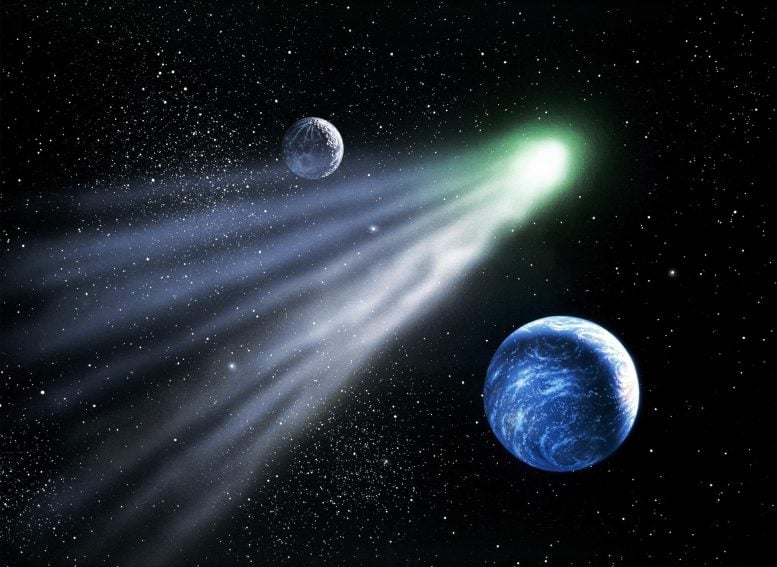
Artist’s illustration of a comet soaring through space.
Comets are cosmic snowballs, the frozen leftovers from the formation of the solar system composed of frozen gases, dust, and rock. They range in size from a few miles to tens of miles wide, but as they orbit closer to the Sun, they heat up and spew gases and dust into a glowing head that can be larger than a planet. This material forms a tail that stretches millions of miles.
The following infographic shows the main components of a comet – nucleus, coma, hydrogen envelope, dust, and plasma tails – indicating their composition, relative sizes, and location.
Below that, the two main reservoirs of comets in the Solar System are shown: the Kuiper Belt and the Oort Cloud.
To serve as examples, the orbits of three famous comets are also included: two short-period comets, 67P/Churyumov–Gerasimenko (the target of ESA’s Rosetta mission) and 1P/Halley, and a long-period comet, Siding Spring, which reached its closest approach to the Sun in late 2014.


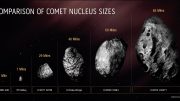
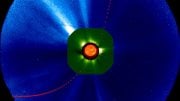
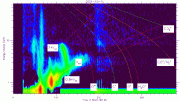
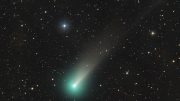

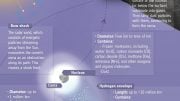
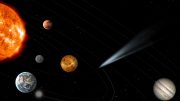
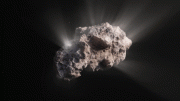
Be the first to comment on "Infographic: Anatomy of a Comet"